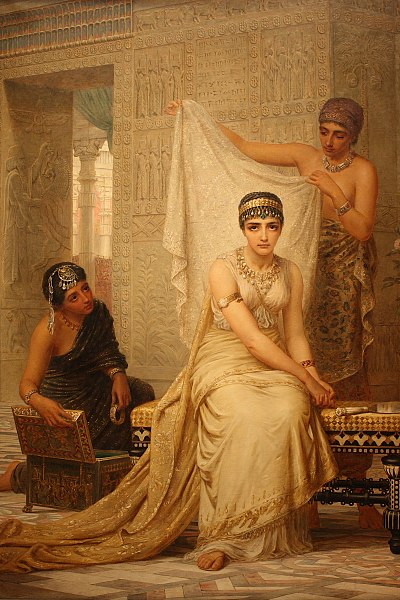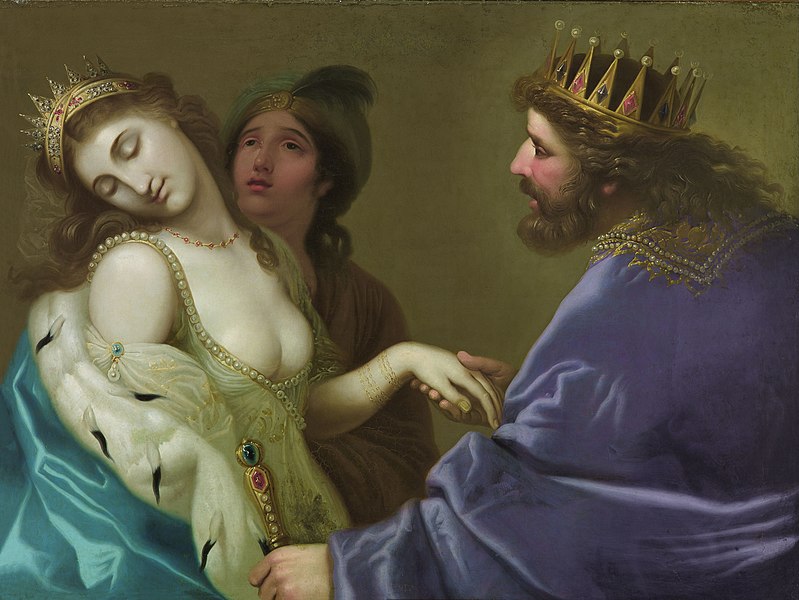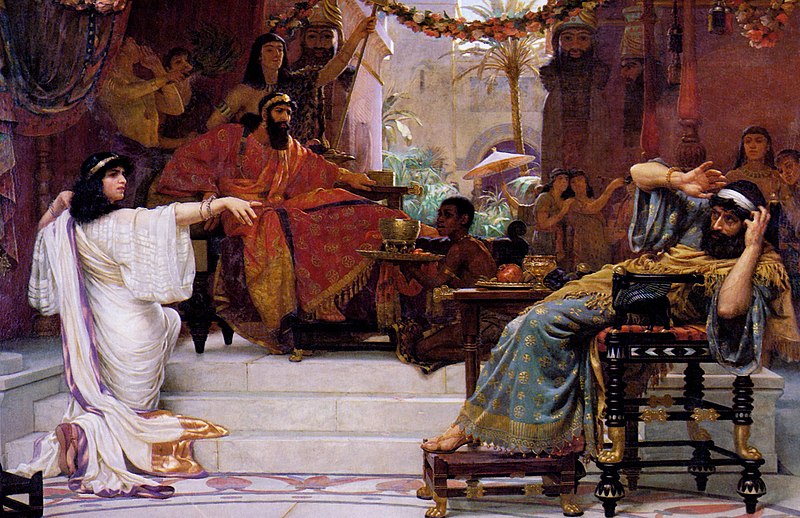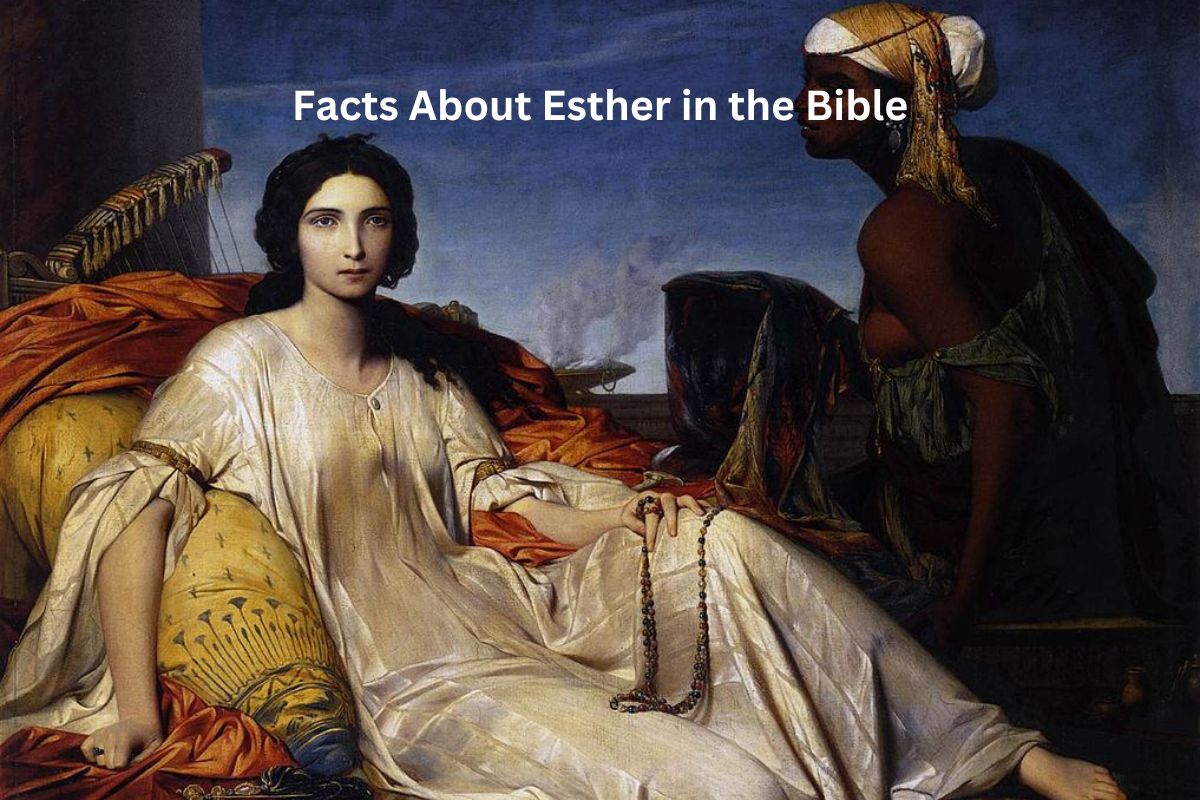Esther is a central figure in the Bible, particularly in the Book of Esther in the Old Testament. Her story is one of courage, faith, and divine intervention. Born as Hadassah, she was an orphan raised by her cousin Mordecai.
Through a twist of fate, she became Queen of Persia, concealing her Jewish identity. When a plot to annihilate the Jewish people surfaced, Esther’s bravery in approaching King Xerxes uninvited and her strategic intervention played a pivotal role in saving her people.
The annual Jewish holiday of Purim commemorates these events, highlighting Esther’s enduring legacy as a symbol of faith and courage.
Esther in the Bible Facts
1. Original name: Hadassah
Esther’s original Hebrew name was Hadassah, which means “myrtle.” This name reflects the beauty and grace she possessed.
Also Read: Facts About Ruth in the Bible
The name “Esther” was given to her after she entered the royal court of King Xerxes (Ahasuerus) in Persia. It is thought to be derived from the Persian word “stara,” which means “star,” highlighting her extraordinary beauty.

2. Raised by her cousin Mordecai
Esther was orphaned at a young age when her parents passed away, leaving her without immediate family.
Also Read: Abraham Facts
Her older cousin Mordecai took on the responsibility of raising and caring for her as if she were his own daughter. This strong bond between them played a significant role in the events of the story.
3. Chosen as Queen of Persia
sther’s remarkable beauty and charm caught the attention of King Xerxes, who was searching for a new queen after banishing his previous queen, Vashti.
In a grand beauty contest or competition, Esther stood out and ultimately won the favor of the king, leading to her becoming the queen of the Persian Empire.
This unexpected turn of events placed Esther in a position of significant influence within the kingdom and set the stage for the dramatic events that unfolded in the Book of Esther.
4. Concealed her Jewish identity
Esther, under the guidance of her cousin Mordecai, decided to keep her Jewish heritage a secret while she lived in the royal court of Persia.
This decision to conceal her identity was likely due to concerns about potential prejudice or discrimination, as being a foreigner or Jew in the Persian court could be perilous.
Esther’s ability to keep her background hidden from the king and his officials became a crucial plot point in the story.

5. Mordecai uncovered a plot to assassinate the king
Mordecai was not only Esther’s older cousin but also her guardian and protector.
He played a significant role in the events of the story by uncovering a plot to assassinate King Xerxes, which he reported to Esther, who then informed the king.
Mordecai’s loyalty and dedication to Esther, as well as his quick thinking and integrity, earned him the king’s gratitude, although he wasn’t immediately rewarded.
6. Haman’s plot to annihilate the Jews
One of the central conflicts in the Book of Esther revolves around Haman, a high-ranking official in King Xerxes’ court.
Haman devised a wicked plot to exterminate all the Jews in the Persian Empire due to his personal vendetta against Mordecai, who refused to bow to him.
This plot set the stage for the dramatic events of the story, including Esther’s courage in approaching the king to intercede on behalf of her people and thwart Haman’s plan.
7. Called for a three-day fast and prayer
When Esther learned about Haman’s plan to annihilate the Jews, she called upon her fellow Jews in Susa to join her in a three-day fast and prayer.
This period of fasting and prayer was a deeply spiritual and solemn preparation for her risky endeavor to approach King Xerxes without an invitation.
Esther and the Jewish community sought divine guidance and strength during this time, acknowledging their dependence on God for a favorable outcome.

8. Risked her life to approach King Xerxes
Approaching the king without being summoned was a perilous act that could result in immediate death, as it was against Persian protocol.
Esther demonstrated tremendous courage when she decided to go before the king, uninvited, to make her plea for the lives of her people.
Her famous words, “If I perish, I perish” (Esther 4:16), reflect her willingness to put her life on the line to save her fellow Jews.
9. Celebrated during the Feast of Purim
The story of Esther and the deliverance of the Jewish people is commemorated annually during the Jewish holiday of Purim.
Purim is a festive holiday marked by joyous celebrations, reading the Book of Esther (the Megillah), giving gifts, and sharing meals with family and friends.
The holiday serves as a reminder of God’s providence and the courage of Esther in the face of adversity, as well as the defeat of Haman’s evil plot.
10. Played a crucial role in saving her people.
Esther’s pivotal role in the salvation of the Jewish people cannot be overstated. Her bravery, faith, and strategic thinking led to a series of events that ultimately thwarted Haman’s plan.
With King Xerxes’ support, she exposed Haman’s wicked intentions, leading to his downfall and the issuing of a royal decree allowing the Jews to defend themselves against their enemies.
Esther’s actions, guided by her faith in God’s providence, ensured the safety and preservation of her people, making her a celebrated figure in Jewish history.
The story of Esther in the Bible is a testament to the power of faith, courage, and divine intervention. Esther’s willingness to risk her life to save her people and her reliance on prayer and fasting serve as enduring examples of strength and faith for readers and believers.
